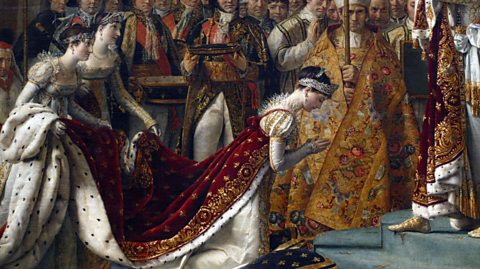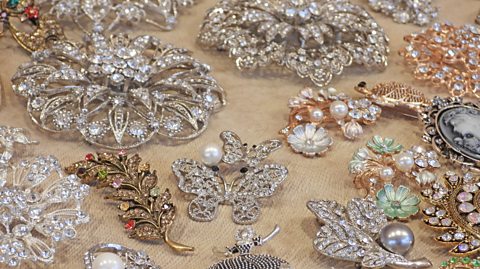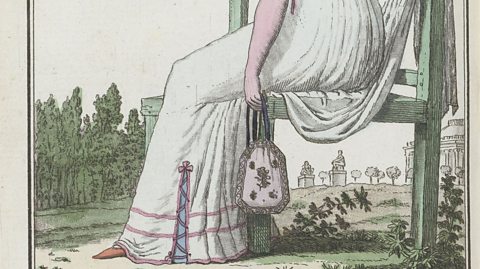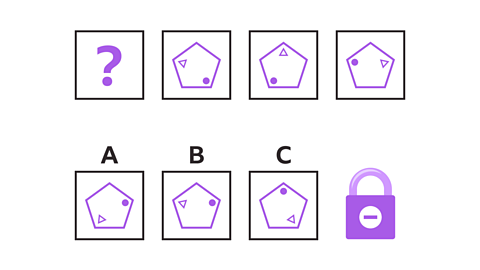Despite spanning less than a decade, the Regency era ushered in a wave of fashion, culture and architecture which took Britain’s High society from the French meaning “good manners”. society by storm.
The historical and political definition of the Regency is the period from 1811 to 1820 when George IV, Prince of Wales, governed the country as prince regent when his father George III was considered unfit to rule due to mental illness - but culturally the term is applied to the years 1795-1837.
While these fads didn't start at home, they were certainly all the rage with Georgian Brits and left an enduring stamp on the pop culture landscape - so much so that many of the tropes and trends of this period are still around today. ≥…»ÀøÏ ÷ Bitesize looks at Regency styles which stood the test of time.

Empire silhouette
The empire silhouette, or empire waist, refers to a high waistline fitted just below the bust with the rest of the material flowing loosely. This trend could be spotted everywhere in the Y2K era of fashion, and TV shows and books set in the Regency era have hailed in another period of empire line dresses with short, puffy sleeves.
But where did it begin? The Empire silhouette is named for the First French Empire period (1804-1815), though this term wouldn’t be used to describe it until the 20th Century. It started as a A western decorative and visual arts and literature movement that takes inspiration from ancient cultures. revival of flowing Greek tunics, such as a peplos or chiton, that were belted above the waist. The airy looks directly opposed the sleeved bodices and puffy A type of side hoop which widened skirts, popular in 17th and 18th Century courts. of the era before.
Empress Joséphine Bonaparte was a major influence in popularising the trend, and Britain was quick to jump on the bandwagon. Ball gowns of this style have become synonymous with the heroines of Jane Austen and Romantic literature set in the Regency period.


Day-to-night looks
The French fashion craze didn’t stop there. Napoleon Bonaparte was keen to see a textile boom in France and went as far as to ban the importation of Indian Muslin, despite it being a favourite material to make empire line dresses. The use of French silk for court costumes was now mandatory by law, and this had a huge influence on the fashion.
It became a faux pas to wear the same outfit to court twice, and soldiers were ordered to wear white silk, so everybody had to be fresh to impress (and thus buy more). Britain adopted the trend of having separate looks for day dress and evening dress. Sometimes you needed an outfit to see you through both: modelled on Joséphine’s coronation costume, glamourous trains could be attached to the empire waistline, so a luncheon outfit could be transformed into a posh gown which showed off your status.
So, if you’ve ever thrown on a blazer to see your daytime outfit through an event, just know the socialites of the Regency era weren’t far behind you.

Costume jewellery
With glitter, sequins and sticky gems, being sparkly is commonplace now - but costume jewellery wasn’t accessible to most until around the Regency era. As early as 1675, a process to make glass look like crystal was improved by glass trades dealer George Ravenscroft. Then Alsatian jeweller Georg Friedrich Strass added a higher content of lead to glass which made it able to withstand a high polish, and imitation gems were born - all during the Georgian era. The imitation diamond would come to be known as the rhinestone, and in candlelight these were indistinguishable from the real thing.
As glass could be cut and polished into any shape and made into hues not found in nature, French-inspired designs were rapidly refined in Georgian society. A transparent glass mixed with lead which simulates the brilliance of gemstones due to strong light dispersion. jewellery was all the rage among aristocrats, who would wear it to avoid their real jewels being stolen on the roads. By the Regency era, paste jewellery was accessible to the middle classes, and Romanticism influenced floral and foliate motifs which remained popular all the way through the Victorian era. Now we have the technology to shape real gemstones in any manner of ways, but rhinestones and faux gems can still be used to add some bling to an every-day outfit.

Clutch bag
Humans have always needed ways to carry their bits and pieces. What’s thought to be the world’s oldest purse was discovered in Germany in 2012, dated between 2,500 and 2,200 B.C. - and was decorated with dog teeth!
A type of drawstring bag called a reticule was new to 1790 - before this, external ‘pockets’ were crafted and worn about the waist (sometimes you can see them peeping out of aprons in old illustrations). But with the arrival of the empire silhouette, streamlined skirts made pockets and pouches impossible to hide, so reticules became a popular solution. Women carried reticules made of velvet, silk or satin with their evening dresses, and even made their own with embroidery or beading.
And they never went out of style - from clasp purses to clutch bags, carrying around your keys, receipts and biscuit crumbs continues to be √Ý la mode.
This article was published in June 2023

Famous books that changed their titles
Read the stories behind these famous name changes.

Brainteaser of the week: Can you open the padlock?
Do you like shape challenges? Complete this ≥…»ÀøÏ ÷ Bitesize pattern-based brainteaser within the time limit to open the padlock.

How well do you know these romantic poems?
The Romantic writers helped to create the language of the modern world, but just how romantic were they really?
